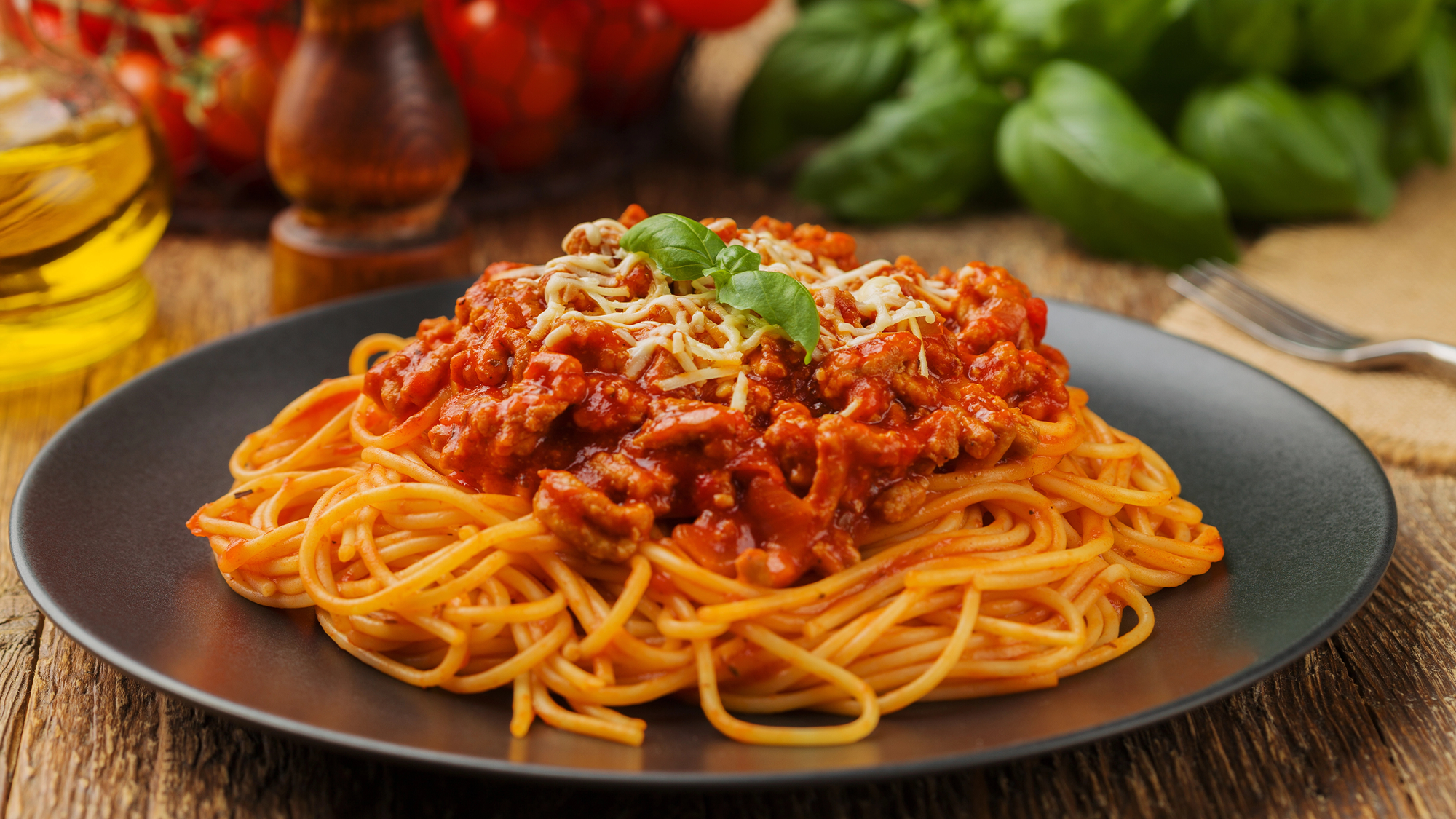Good luck trying to twirl your fork around the world’s thinnest piece of spaghetti. This nanofiber is about 200 times thinner than a human hair and was created by a team at University College London (UCL). While it won’t be making its way onto the menu of an Italian restaurant anytime soon, this creation was cooked up in a lab because nanofibers have wide applications in medicine and industrial design. The tiny fiber is detailed in a study published November 21 in the journal Nanoscale Advances.

The next thinnest known pasta is su filindeu–or threads of God– and is made by hand by a pasta maker in the town of Nuoro, Sardinia. Su Fillindeu is estimated at about 400 microns wide, making it roughly 1,000 times thicker than this new electrospun laboratory creation. At 372 nanometers, this new lab-made spaghetti is narrower than some wavelengths of light.
“I don’t think it’s useful as pasta, sadly, as it would overcook in less than a second, before you could take it out of the pan,” study co-author and UCL pharmaceutical materials scientist Gareth Williams said in a statement.
What are nanofibers?
Nanofibers are any fibrous material that are less than 100 nanometers (nm). One nanometer is equal to a billionth of a meter. For scale, a human hair is roughly 80,000 to 100,000 nanometers wide.
Nanofibers that are made from starchy plant materials that store excess glucose are particularly promising. They could be used in bandages that aid wound healing because the nanofiber mats are very porous. This allows water and moisture into the wound, but keeps bacteria out. It could also be used as a type of scaffolding for bone regeneration and to deliver medicine into the body.
[Related: Silkworm-inspired weaving techniques can produce better nanofibers.]
“In addition, nanofibers are being explored for use as a scaffold to regrow tissue, as they mimic the extra-cellular matrix–a network of proteins and other molecules that cells build to support themselves,” said Willams.
However, these types of nanofibers rely on starch being extracted from plant cells and purified. Extracting the starch requires a large quantity of energy and water, so chemists are looking for a more efficient way to spin these nanofibers.
“Starch is a promising material to use as it is abundant and renewable–it is the second largest source of biomass on Earth, behind cellulose–and it is biodegradable, meaning it can be broken down in the body,” study co-author and UCL chemist Adam Clancy said in a statement. “But purifying starch requires lots of processing.”
A more environmentally friendly method would be to create nanofibers directly from a starch-rich ingredient like flour. After all, flour is the basis for pasta.
Salt, fat, formic acid, heat
In the new study, the team describes making spaghetti that is only 372 nanometres across. To do this, they used a technique called electrospinning. An electric charge pulls threads of flour and liquid through the tip of a needle. This highly detailed work was performed by UCL student Beatrice Britton as part of her master’s degree in chemistry.
“To make spaghetti, you push a mixture of water and flour through metal holes,” said Clancy. “In our study, we did the same except we pulled our flour mixture through with an electrical charge. It’s literally spaghetti but much smaller.”

The needle that contains the mixture and the metal plate where the mixture is deposited create two ends of a battery. Adding an electrical charge makes the mixture complete the circuit. It streams out of the needle and onto the metal plate.
Also, electrospinning using a starch-rich ingredient like white flour is more challenging than using pure starch. The flour has more impurities–the protein and cellulose–which make the mixture more viscous and unable to form fibers.
To account for this, the team used flour and formic acid instead of water. The formic acid breaks up the giant stacks of spirals–or helices–that make up starch. The acid tears them up because the layers of helices stuck together are too big to be the building blocks of nanofibers. The heat from cooking has the same effect on the starch as the formic acid. It rips apart the layers of helices, making the pasta digestible.
[Related: New material neutralizes 96-percent of virus cells using nanospikes.]
The formic acid eventually evaporates as the noodle flies through the air to the metal plate. The team also had to carefully warm up the mixture for several hours before they could slowly cool it back down and get the right consistency.
The new “nanopasta” also formed a mat of nanofibers about 2 centimeters (less than one inch) across. While the mat itself is visible, each individual strand is too narrow to be clearly captured by any form of visible light camera or microscope. To measure their widths, the team used a scanning electron microscope.
“We’ve shown that a simpler way to make nanofibers using flour is possible,” said Clancy. “The next step would be to investigate the properties of this product. We would want to know, for instance, how quickly it disintegrates, how it interacts with cells, and if you could produce it at scale.”

